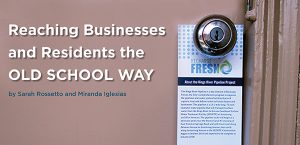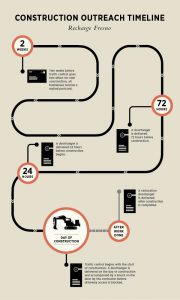14 Aug Reaching Businesses and Residents the Old School Way

New infrastructure can be progressive and much-needed for reliability, safety and quality of life. But construction can cause frustrations for commuters, residents and businesses who are only seeing it as road work and a maze of detours. Due to the high impact of road closures required for construction of 11 miles of drinking water pipelines, the City of Fresno’s Recharge Fresno Program team has focused on field outreach and doorhangers as a primary method for ensuring impacted residents and businesses know what to expect during construction.
The water pipelines, called the Regional Transmission Mains, currently in construction along congested business corridors and residential areas, will bring a new source of surface water to a community that has historically relied on groundwater. For the safety of construction crews, full road closures are required during construction, including sidewalk, bus stop, parking lane and driveway closures. While social media and media outreach with the City of Fresno’s communications department have been helpful in communicating to passersby and commuters, a tailored doorhanger distribution approach has been successful in notifying residents and businesses along the pipeline route – the most severely impacted properties.
For this project, the outreach team worked closely with CH2M during the design and construction phases to develop a comprehensive series of notifications, including one mailed postcard and five doorhangers to notify all properties along the alignment. Two weeks and 72 hours before traffic control goes into effect in a new section of work, all properties in the section receive a mailed postcard and then a final doorhanger 72 hours before. Three more reminder doorhangers are distributed daily and timed according to 72 hours before, 24 hours before and the day of driveways being blocked. A restoration doorhanger is left after the active construction is completed, and notifies property owners about paving and road restoration work in the coming weeks. This approach requires the contractor’s commitment up front, but it has led to more community cooperation because stakeholders are more informed.
Below are some key strategies that have helped with the success of the field outreach approach:
- Keep It Organized: To stay organized, the construction contractors were given kits with seven different doorhangers (Monday through Saturday). When they know which day construction will impact a specific driveway, the corresponding doorhanger is distributed. Once construction in front of a driveway is complete, the final restoration doorhanger is distributed.
- Translate All Notifications: Because construction is occurring in a very diverse community, all construction notices include information in English, Spanish and Hmong. City staff provided assistance with in-person field outreach and multicultural communication to ensure language is never a barrier to stakeholders receiving information.
- Set Expectations: The doorhangers clearly identify the impacts and work hours in order to set realistic expectations. The goal of ongoing outreach is to avoid surprises and ensure accurate information despite a dynamic environment of active construction.
- Give Reminders: Distributing the doorhangers 72 hours before, 24 hours before and the day of a driveway closure gives residents extra time for planning their daily access. It helps them plan to park on a side street and walk to their properties, notify customers about the change in access and ask for help if they have special access needs. The day-of doorhangers and in-person contact is the most important reminder and often allows residents one last chance to move vehicles.
- Tie to the Big Picture: The team always likes to say that “it’s short-term pain for long-term gain.” The purpose and need for new water infrastructure is included in all project communication, in an effort to remind ratepayers that the reason for construction is much more significant than just tearing up the road.
- Clearly Identify Contact Information: The outreach team fields calls through an information line and emails through a website contact form. Both options are included prominently on all notifications so stakeholders know how to reach the team, if needed.
More than half of the water pipeline has been constructed to date, and this comprehensive outreach approach has ensured residents and businesses have clear expectations, accurate information and identified team contact information throughout construction.

